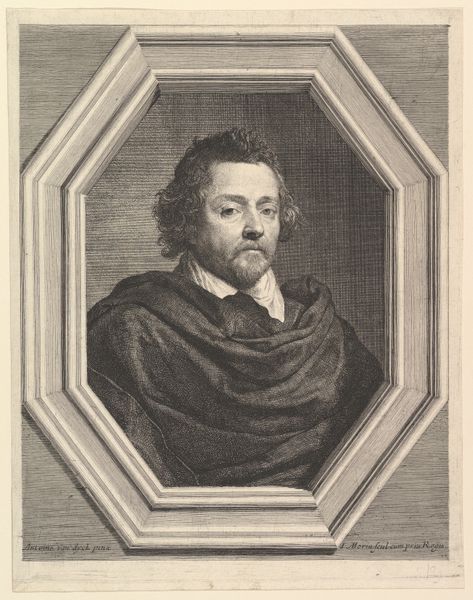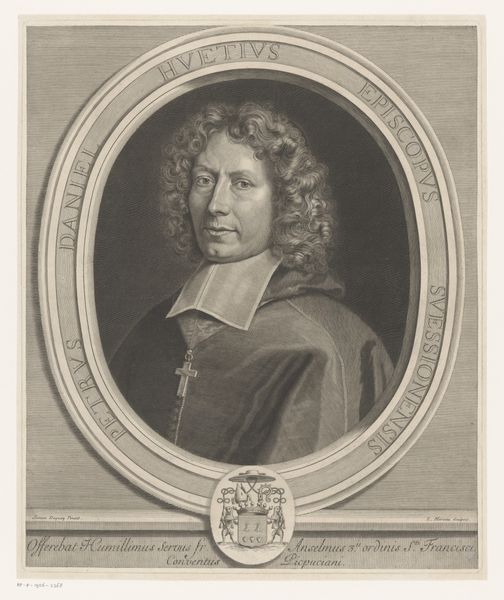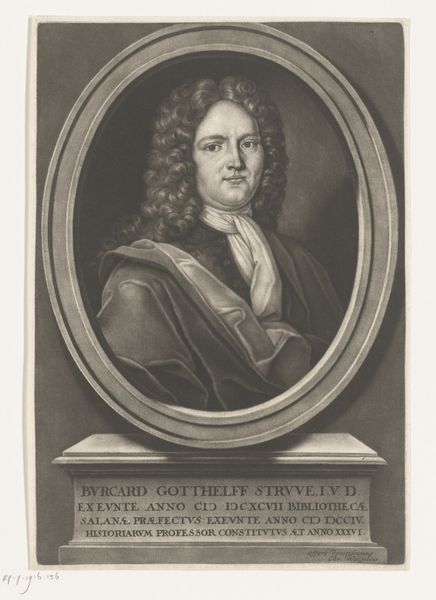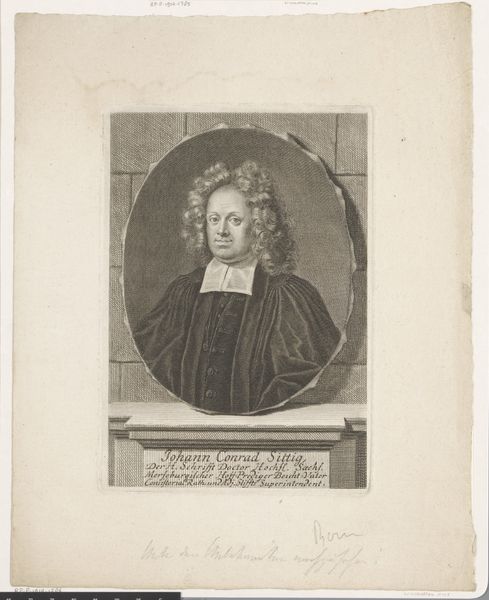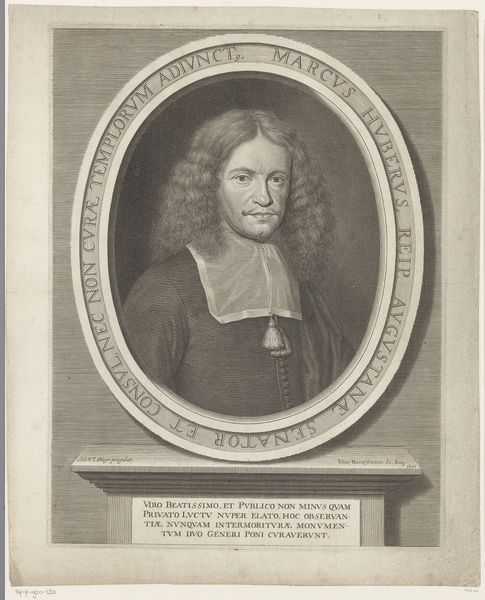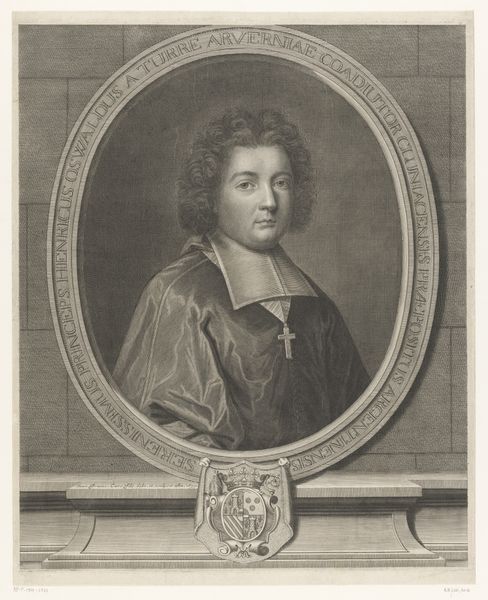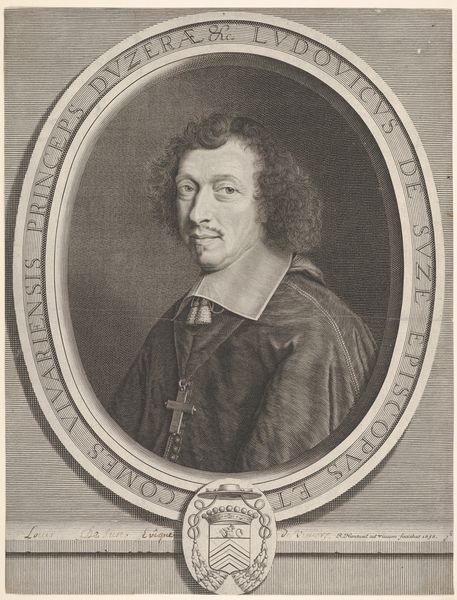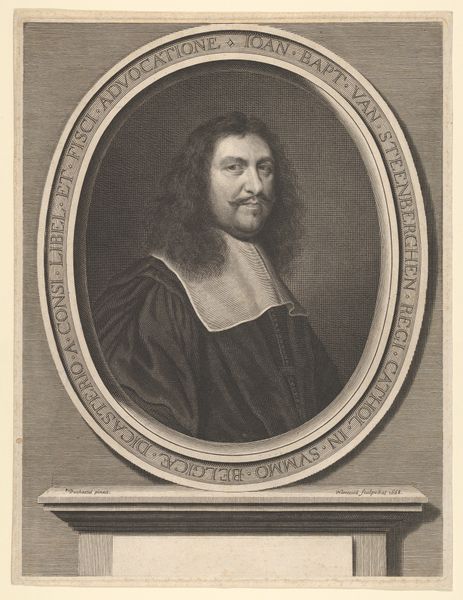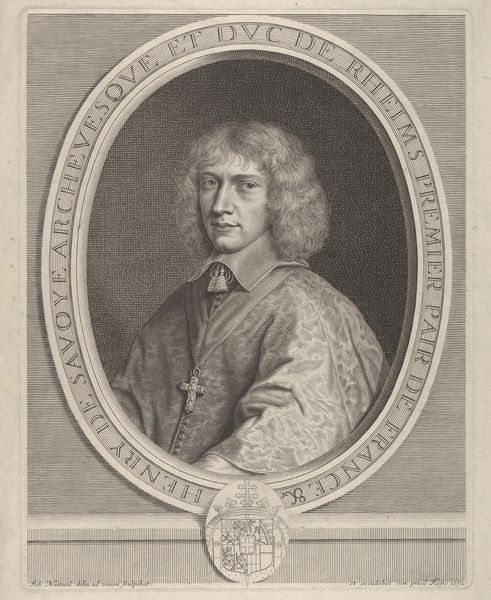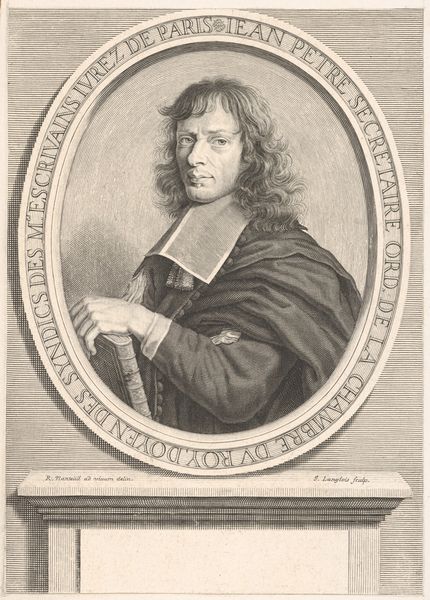
engraving
#
portrait
#
pencil drawn
#
baroque
#
charcoal drawing
#
charcoal art
#
historical photography
#
pencil drawing
#
history-painting
#
engraving
Dimensions: height 341 mm, width 252 mm
Copyright: Rijks Museum: Open Domain
Curator: An interesting find, this engraving, dating back to between 1724 and 1778, is titled "Portret van Edward Hyde" and resides here at the Rijksmuseum. Quite the commanding presence, wouldn't you say? Editor: Indeed. The overall impression is…stately, yet somber. The engraver masterfully captures light and shadow, but it evokes a feeling of reserved authority rather than vibrant energy. Curator: Notice the elaborate frame—the printmaking process itself, where such frames and titles are created on metal, becomes part of the portrait's function in society. What stories do the man, his garments, the mode of reproduction and its potential distribution suggest? Editor: Well, the sitter's posture and the almost baroque quality of the hair, not to mention the octagonal framing within the larger rectangle, immediately communicate a certain status. It is all visual cues that trigger learned responses related to social rank. I see tight controlled detail—notice how the buttons align, how shadows cross the chin? It projects confidence in this man's ability to take command. Curator: Absolutely, and to delve further, Edward Hyde, Earl of Clarendon, was a significant figure in English politics. As a Lord Chancellor, his image carries weight, but also, this very image may have shaped perception, contributing to his power, while potentially, expanding the workshops that manufactured the work itself. Editor: Precisely. The visual weight and compositional decisions all construct and project a specific kind of authority. But the choice of engraving over painting interests me, as it impacts the texture and tonal range. There's a linearity here, a precision, which is very different from the lushness we might expect from an oil portrait of a nobleman. Curator: It speaks to a wider world, this mode of dissemination would create images accessible for broad distribution across geographic and social stratifications. Think of the print shops and artisans involved; how did this project define the image of those engaged in the project itself? Editor: You are right—I see, from a material point, it underscores the democratization of portraiture, while, from a formal perspective, the contrast and limited palette underscore Clarendon's character. A very strategic and thoughtful piece from both perspectives.
Comments
No comments
Be the first to comment and join the conversation on the ultimate creative platform.


